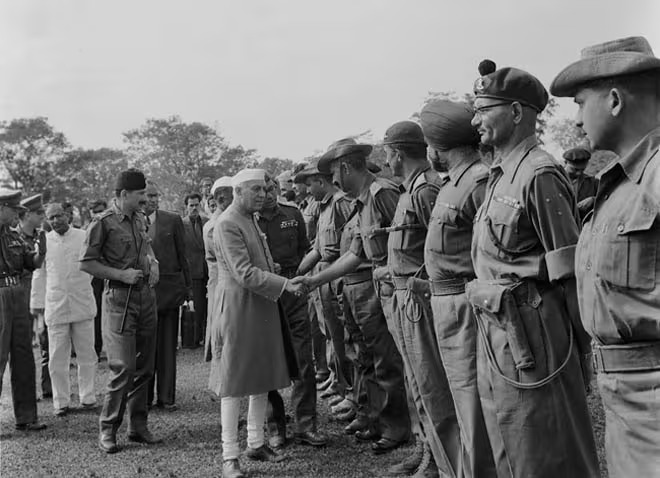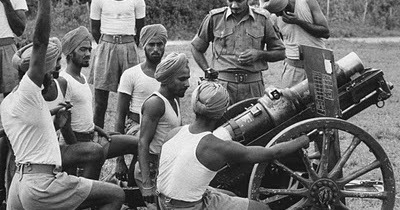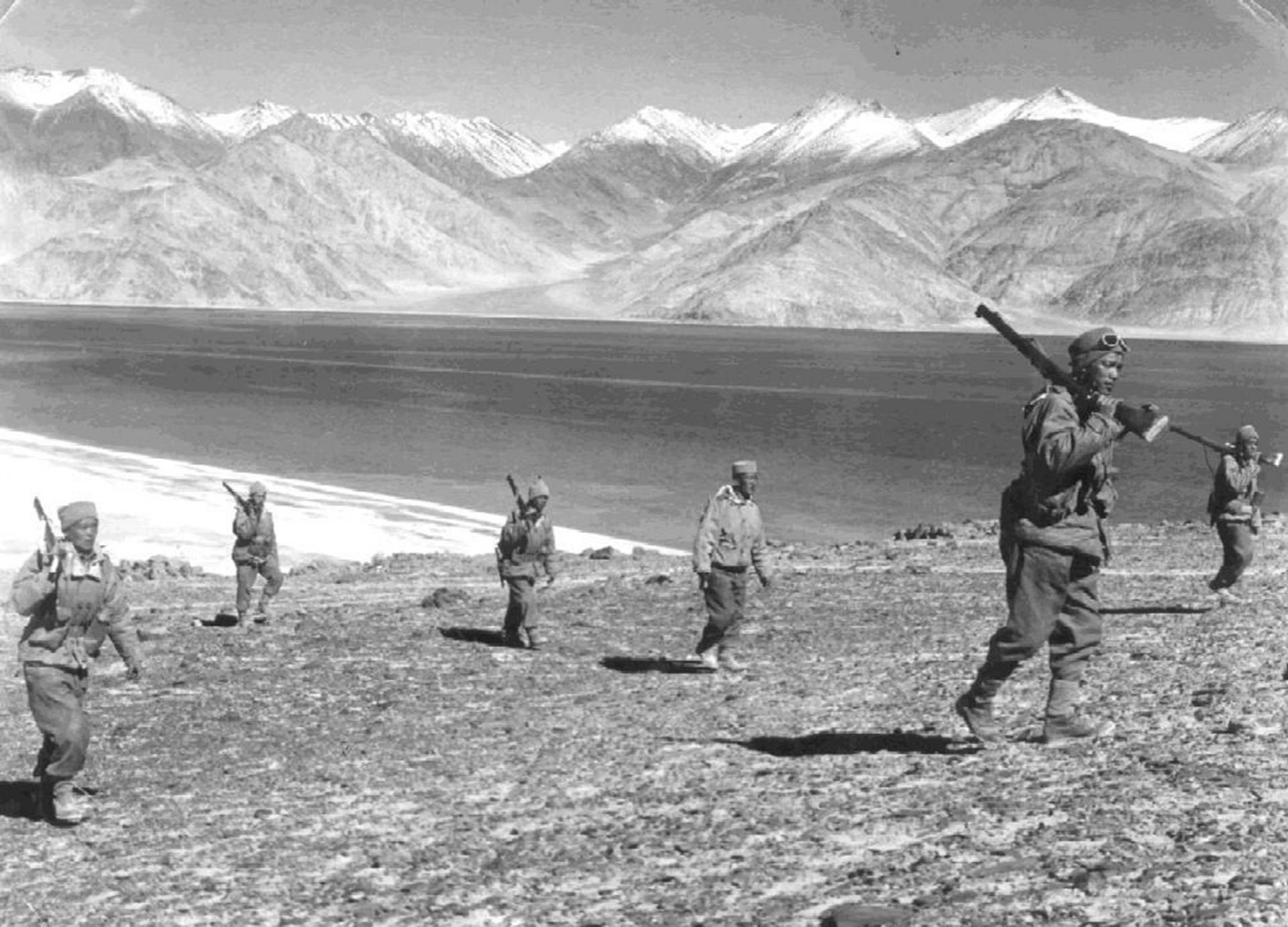Introduction
The Sino-Indian War erupted on 20 October 1962 with simultaneous Chinese offensives in the western sector (Aksai Chin, Ladakh) and the eastern sector (then North-East Frontier Agency, NEFA; today Arunachal Pradesh), and concluded after China declared a unilateral ceasefire on 20–21 November 1962, retaining control of Aksai Chin and withdrawing in the east to positions near the McMahon Line. Fought at extreme altitude without either side employing air power or naval assets, the brief conflict exposed India’s strategic and logistical weaknesses and reshaped its defense posture for decades.

Background and Causes
- Boundary disputes hardened over two sectors: in the west, Aksai Chin—where China had built a road linking Xinjiang and Tibet; and in the east, differing interpretations of the McMahon Line in NEFA.
- After the 1959 Tibetan uprising, border skirmishes increased, and India adopted a “Forward Policy” establishing advanced posts in disputed areas, which heightened tensions with the People’s Liberation Army (PLA).
- Diplomatic overtures failed, including Zhou Enlai’s 1960 suggestion of a swap (China keeps Aksai Chin; drops claims in NEFA), which India rejected; both sides expanded patrols through 1962 amid mutual distrust.
The War: Course and Theatres
- Opening assaults (20 October 1962): The PLA launched coordinated attacks roughly 1,000km apart—seeking to expel Indian forces from Aksai Chin and to overrun Indian positions along the Namka Chu in NEFA—gaining rapid ground against outnumbered, under-equipped Indian units.
- Lull and proposals: After intense initial battles, a brief lull followed as China advanced south of previous lines and Zhou proposed mutual withdrawals; India rejected the terms as inadequate following the incursions.
- Renewed offensives and ceasefire: Fighting resumed in November, with Chinese advances in both theatres; on 20–21 November, Beijing announced a unilateral ceasefire and withdrawal in the east, while consolidating gains in Aksai Chin.
Key Sectors and Battles
- Western sector (Aksai Chin): China secured the road corridor and pushed Indian forces back across contested valleys such as Chip Chap, underpinning its continued control of Aksai Chin postwar.
- Eastern sector (NEFA): Chinese forces overran positions south of the Thagla Ridge and deeper into NEFA, threatening approaches to the Assam plains before the unilateral ceasefire and pullback near the McMahon Line.
- Noted actions and bravery: Fierce stands at posts like Rezang La (13 Kumaon), Walong, and the fall of Tawang are remembered for Indian soldiers’ valor under overwhelming odds.
Casualties and Costs
- India suffered a decisive defeat, with thousands killed or captured; estimates vary, with Britannica noting roughly 7,000 killed or captured and other tallies listing about 3,250 Indian dead, reflecting the conflict’s intensity and fog of war.
- China achieved its operational objectives swiftly, then ceased fire unilaterally, signaling limited aims focused on boundary coercion and consolidation in the west.
Air and Naval Posture
- Neither side employed their air forces or navies in combat roles during the conflict, keeping the war confined to land operations along the Himalayan frontier.
International Context and Responses
- The war coincided with the Cuban Missile Crisis; after its resolution, the United States and United Kingdom indicated support for India, while the Soviet Union, preoccupied with Cuba, was less engaged than in prior years.
- U.S. assistance signals, including movement of an aircraft carrier, coincided with China’s announcement of a ceasefire on 20 November.
Leadership, Planning, and the Henderson Brooks–Bhagat Review
- India’s “Forward Policy,” intelligence shortfalls, and understrength mountain formations contributed to operational setbacks; subsequent introspection focused on command, logistics, and preparedness.
- The Indian Army’s internal Operations Review—Henderson Brooks–Bhagat Report—remains classified; leaked portions criticize militarily unsound directives and highlight structural failures in planning and readiness leading up to October–November 1962.
Consequences and Aftermath
- Territorial outcome: China retained approximately 38,000km² (about 14,700 square miles) in Aksai Chin, which remains under Chinese control and central to the continuing boundary dispute.
- Strategic shifts: India modernized and expanded its armed forces, reoriented to mountain warfare, and strengthened logistics and infrastructure along the Himalayas in the years following the war.
- Political repercussions: India’s defense leadership changed (including the resignation of Defence Minister V.K. Krishna Menon), and national security decision-making underwent significant recalibration.
Key Dates and Timeline
- 20 October 1962: PLA launches simultaneous offensives in Aksai Chin and NEFA, opening the war.
- 24–27 October 1962: Lull and Chinese proposals; India rejects terms viewed as legitimizing recent advances.
- 14 November 1962: Indian leadership reiterates demands for broader withdrawal; fighting continues in both sectors.
- 20–21 November 1962: China announces unilateral ceasefire; withdraws in the east; consolidates in Aksai Chin.
Why India Lost
- Overstretched Forward Policy and exposed posts; difficult logistics at high altitude versus Chinese positional advantages on commanding ridgelines.
- Understrength formations lacking adequate artillery, winter clothing, and mountain-optimized equipment; intelligence and command frictions impaired coherent response.
- Strategic surprise in timing and scale, synchronized across distant sectors, overwhelmed local defenses before reinforcement could stabilize lines.
Significance
- The 1962 war decisively altered the strategic relationship between India and China, entrenched the Line of Actual Control as a de facto boundary pending settlement, and set the template for recurring border crises in later decades.
- It catalyzed enduring reforms in India’s defense posture, institutional learning from the Henderson Brooks–Bhagat review, and a sustained focus on mountain warfare and border infrastructure.
Quick Facts
- Duration: 20 October–20/21 November 1962 (about one month).
- Theatres: Aksai Chin (western sector) and NEFA/Arunachal Pradesh (eastern sector).
- Outcome: Chinese military victory; retention of Aksai Chin; unilateral ceasefire and withdrawal in the east near the McMahon Line.
- Air/naval use: None by either side; land war at high altitude.

Interesting Notes
- China’s attack coincided with the Cuban Missile Crisis, a timing some analysts see as designed to limit external intervention; the swift resolution in Cuba allowed rapid U.S.–UK support signals to New Delhi just as Beijing declared a ceasefire.
- Rezang La’s Charlie Company (13 Kumaon) became iconic for last-stand courage; Major Shaitan Singh was posthumously awarded the Param Vir Chakra.
- The Henderson Brooks–Bhagat Report, though still classified, remains a touchstone for debates on 1962 lessons and civil–military coordination in India.
Conclusion
The 1962 Sino-Indian War was a short, high-altitude conflict that exposed stark asymmetries in preparedness and posture, enabling China to consolidate control over Aksai Chin while pulling back in the east after a unilateral ceasefire. Its enduring legacy includes a hard reset of India’s defense strategy, the entrenchment of an unsettled Line of Actual Control, and a persistent, consequential boundary dispute shaping India–China relations to this day.








Leave feedback about this